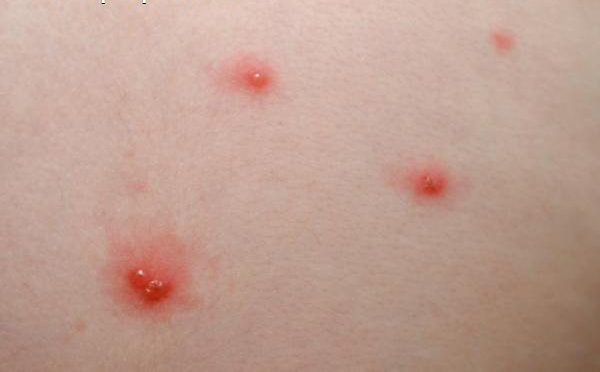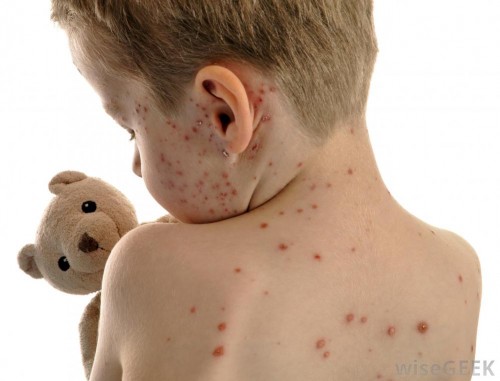Chicken Pox ‘er Chicken Pecks ‘er Chicken Bumps
We’ve got us a bit of a pickle here now that we’ve had such an amazing result with our Chicken Pox vaccine program. Perhaps you missed the news but since we started the Varicella vaccine program in earnest in 1995, the overall incidence of the miserable thing has declined by around 90 percent!
There used to be about 4 million cases of the disease each year in children between one and four years of age; but now that figure has been decimated – or has it?
Diagnosis has always been fairly easy (as these things go). Most “grandmother’s” can tell you that the rash looks like a “dew drop on a rose petal” – a small blister like lesion surrounded by reddened skin. Lesions usually come out in waves and itch like crazy; so, when you notice them, you usually see lesions in all stages: from early blisters to crusting over.
Of course lately we’ve also been able to do a blood test to prove the varicella antigen, which pretty much clinches the diagnosis. And that’s a good thing cause the disease seems to have “changed it’s spots.”
What we’re seeing now are some “breakthrough” infections in children who have had the shots. In fact some studies have reported as much as 15-20% of vaccinated children still develop the disease.
The good news is that breakthrough Chicken Pox is much, much more mild. It doesn’t last nearly as long, is less debilitating and often seems to look different.
That’s the bad news the little pox’s often look more like a bug bite than they do the “real” Chicken Pox. And, with such attenuated (mild) symptoms I’m sure many cases are now being overlooked for something else. The blood test for Varicella will still work for getting at the truth but only if parents, teachers and doctors think to do one.
Breakthrough Varicella
We know the vaccination works, so what might cause a “breakthrough” case? Well, at least two things have been shown to predispose toward it: getting the shot before 15 months and the length of time since the vaccination.
 They’ve found that that when the shot was given before 15 months of age the effectiveness was only 73 percent compared with the normal 98 percent of those getting it after 15 months of age. Additionally, the effectiveness in the first year after the shot is 97 percent compared with 84 present in years 2-4.
They’ve found that that when the shot was given before 15 months of age the effectiveness was only 73 percent compared with the normal 98 percent of those getting it after 15 months of age. Additionally, the effectiveness in the first year after the shot is 97 percent compared with 84 present in years 2-4.
Children with breakthrough varicella, more than 42 days after the vaccine so it has had a chance to work, seventy-five percent of the time develop only 50 lesions (compared with an average of 300 lesions in unvaccinated children). They recover faster and have less complications. And they may not even form vesicles and therefore not break, form crusts or be as contagious. Perhaps even about two thirds less contagious than unimmunized children.
Treatment
The “pox,” even the real kind, is pretty much a self-limiting disease so its treatment is largely symptomatic – meaning we treat the symptoms and let the body fight the disease itself. Fluids to prevent dehydration, Calamine lotion or oatmeal baths for the itching and cotton gloves for the scratching are what is needed. And be sure NOT to use aspirin for any fever – use acetaminophen instead. Aspirin has been linked to a severe disease known as Reye’s syndrome.
In complicated cases and for children with immune deficiencies the doctor will use acyclovir, an antiviral medication.
So why the fuss?
First, even though the presentation of the disease may be mild, the disease, none-the-less, is still there and we don’t yet know what the long term results will be. The varicella virus also predisposes a person to shingles later on. Will breakthrough Chicken Pox still produce the same incidence of Shingles? We don’t know yet, it’s too soon to tell.
Second, even though seventy five percent of children have a mild case, twenty-five present still get the full disease – and it can be really bad especially in children with another disease. Children with eczema get the lesions very severe. Children (or anyone around them) being treated for cancer can get disseminated Varicella and die.
That’s why we made such an effort to develop the vaccine in the first place. So, all good children need to be immunized AND we still need to be vigilant to recognize a breakthrough mild case so we can treat correctly and take precautions to prevent spread.
Schools, daycares, hospitals and other settings relying on vaccine-derived immunity to protect against varicella spread and transmission need to be particularly suspicious of illnesses which “sorta’ look like” Chicken Pox. They should refer the child to a doctor within 24 hours of symptoms so that it can be diagnosed, treated, and complications prevented. And, most importantly, precautions taken to prevent spread to any “at risk” persons.

